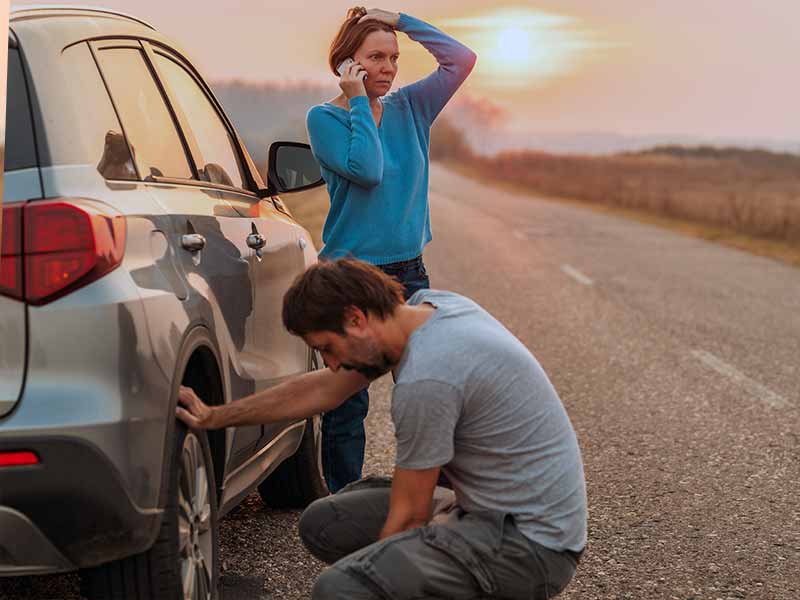Driving on a flat tire is dangerous and generally not recommended. It can also quickly ruin a potentially patchable tire, damage your rim, or even damage suspension components.
But what if you’re in an emergency? Is it possible to safely drive on a flat if you drive slowly and carefully?
Can You Drive On A Flat Tire In An Emergency?
Driving on a flat tire in an emergency is possible if done very slowly and only for a short distance. Turn on your hazard lights to warn other motorists you’re traveling at much lower speeds than the other traffic.
Driving on a flat tire will run the risk of ruining the tire and needing to replace it. You should keep this in mind when deciding whether to continue driving.
The best option is to avoid driving with a flat tire. Driving too quickly or too long could do much more than damage a tire beyond the point of repair. You run the risk of a tire blowout and loss of control that could lead to a severe accident.
Let’s take a closer look.
What Happens If You Drive On A Flat Tire?
Unless you have run-flat tires, you shouldn’t attempt to drive with a flat tire or significantly low tire pressure. Traction and handling become extremely unpredictable, and you can easily lose control.
Driving on a flat tire will quickly ruin a tire that might have been repairable. When there is no air pressure in your tire, the sidewalls fold over at the bottom. This is because the tire’s sidewalls can’t support the weight of your vehicle when there’s no air in the tire. As you begin to drive, the extreme flexing rapidly damages the sidewall to the point of no longer being safe to use.
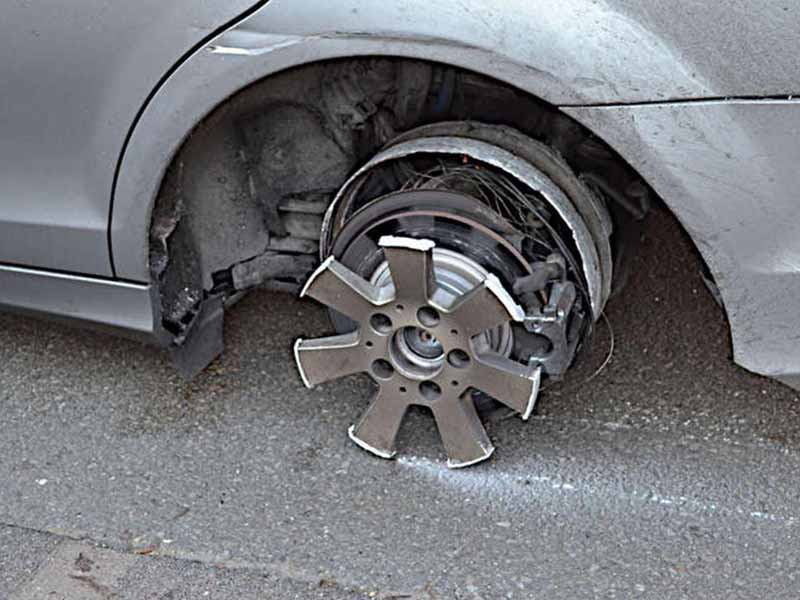
Driving at higher speeds when your tire is flat will cause extreme heat to build up in the sidewalls. After a short time, the tire will begin smoking, melting, and breaking apart. As it does so, pieces of the tire will come off and potentially damage the bodywork of your car or truck or its suspension components.
Also, when the tire begins breaking apart, the poor traction that may have remained will become extremely unpredictable and can easily cause a loss of control. This is especially true if you’re driving at higher speeds.
Once the tire has been worn away from the rim, nothing is left to protect the wheel. When this happens, your car or truck will begin riding on nothing but the wheel rim. At this point, the wheel would be rapidly damaged beyond repair if it hadn’t been so already.
Can I Drive Slow On A Flat Tire?
It isn’t recommended to drive on a flat tire at all unless absolutely necessary. But if you are going to do so, you should be sure to drive slowly and carefully with your hazard lights on to alert other drivers that you are moving at a slow speed.
If you decide to drive on a flat tire, try to do so for as short of a distance as possible to prevent further damage and possibly be able to have the cause of the flat tire repaired.
Driving on a flat tire for too high of a speed or too long will ruin the tire and require you to replace it. It’s also dangerous to do so and should be avoided if at all possible.
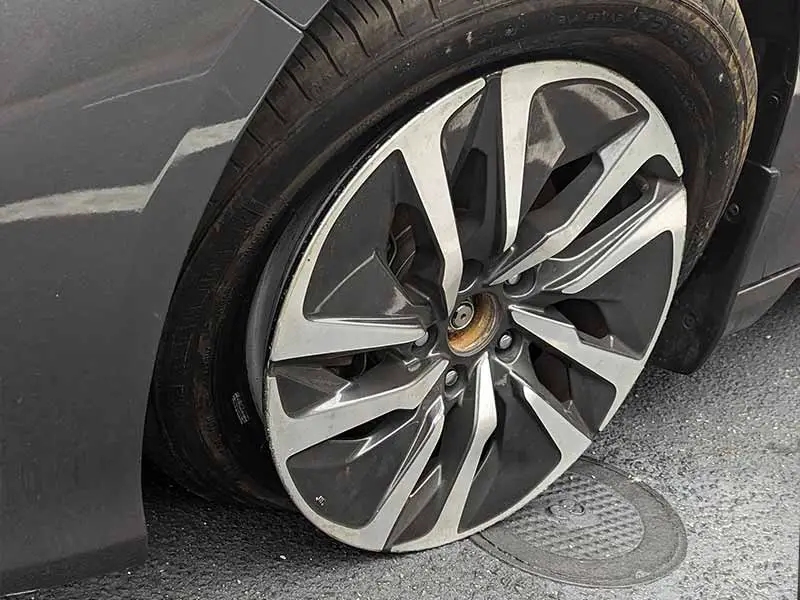
Can I Drive On A Flat Tire To Get Air?
Driving on a flat tire isn’t recommended, but it can be done in an emergency at low speed for a short distance. You should turn on your hazard lights and drive as slowly and carefully as possible. Avoid sudden turns or acceleration, which can lead to losing control.
If you attempt to drive too far without any air pressure in your tire, it will damage the tire beyond repair. It’s best to mount your spare tire, if you have one, or use a sealant kit to try and temporarily plug and reinflate the tire before attempting to continue driving.
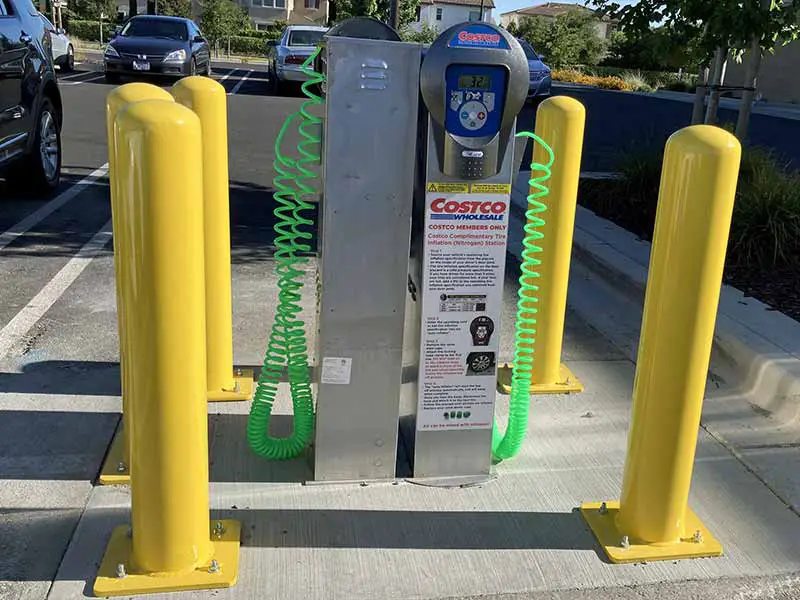
Many new cars and trucks don’t come with a spare tire these days, although many that don’t include a spare tire will consist of a sealant kit to help you reinflate your tire. Check your vehicle’s interior storage areas to see if the manufacturer included a spare tire or sealant kit.
Will Driving On A Flat Tire Ruin The Tire?
Driving on a flat tire very slowly for a very short distance may be possible without ruining the tire. The longer you drive or, the more quickly you drive on a flat, the faster you will damage the tire’s sidewalls.
Even a flat tire on a parked vehicle can cause the sidewall to become damaged and become unusable if left uninflated for too long.
Run flat tires are meant to be driven on when flat in an emergency for up to 50 miles at speeds below 50 mph. Once a run-flat tire has been driven on without air pressure, it is considered unusable and must be replaced.
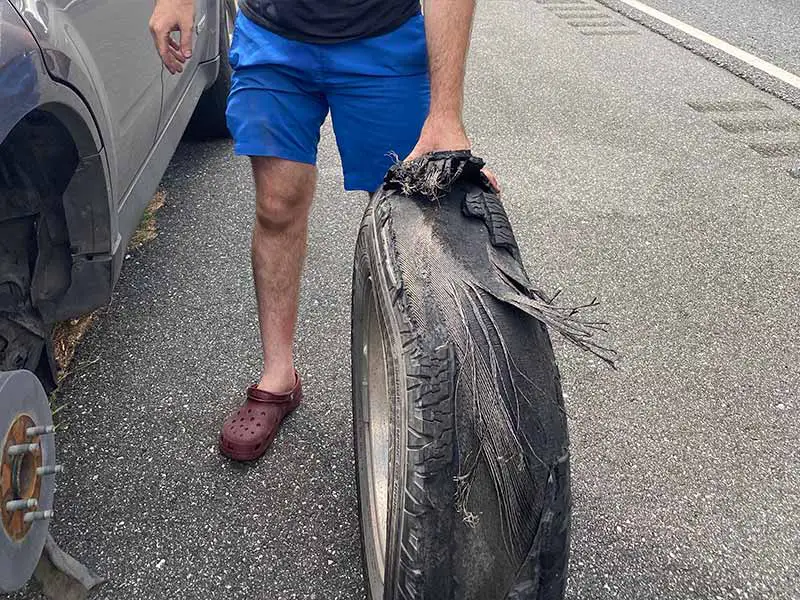
Will Driving On A Flat Tire Ruin The Rim?
Driving slowly for a short distance may risk causing a damaged tire, but the wheel rim will likely remain undamaged. However, this is not a guarantee. A tire blowout could expose a portion of the rim and allow it to come into contact with the road surface. This will quickly damage the rim.
Also, driving on a flat tire can cause it to come away from the rim, leading to a damaged wheel if it comes into contact with the pavement.
Run flat tires can withstand 50 miles at up to 50 mph without issue to the wheel. However, pushing past these limits can be very dangerous and cause the tire to fail, which could quickly lead to a damaged rim.
How Far Can You Drive On A Flat Tire Before Damaging The Rim?
Damage to the rim of your wheel can happen very quickly or even at the moment you realize you have a flat tire. Damage to your rim will usually occur due to the tire coming away from the rim.
If your tire is still properly mounted to the wheel and has no air, driving slowly and carefully for a very short distance will not likely cause damage to the rim. But there is no guarantee.
The best course of action is to not drive on a flat tire. If you don’t have a spare or any means of patching a punctured tire, consider calling for help.
Call roadside assistance to either patch the tire on-site for you or tow you to the nearest tire shop to either repair or replace the tire.
What To Do If A Tire Goes Flat While Driving
If your tire pressure monitoring system (TPMS) alerts you with a low tire pressure light on your dashboard, you should pull over immediately and inspect all of your tires.
TPMS systems that use tire pressure sensors in the tires (Direct TPMS) can display the current tire pressure and allow you to determine which tire is the problem.
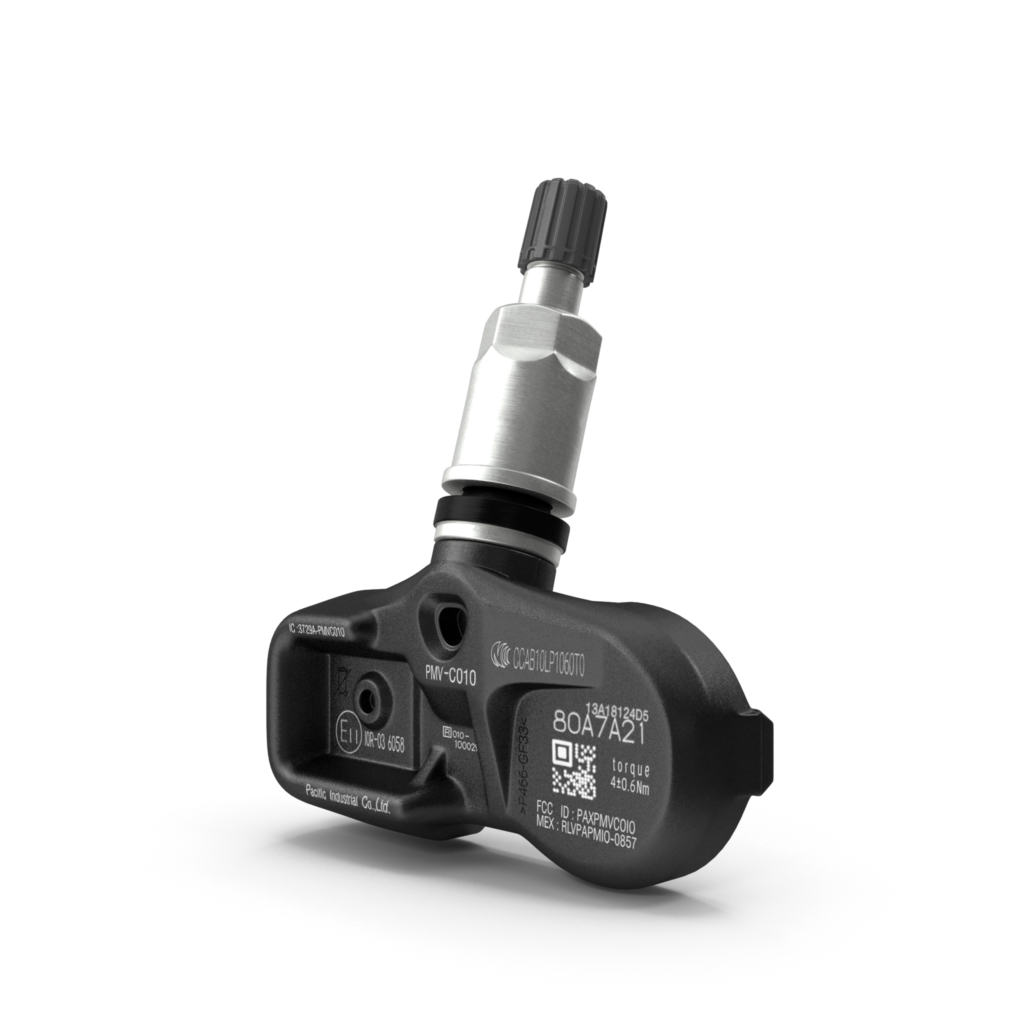
TPMS systems that use the anti-lock braking system (ABS) wheel speed sensors will not be able to display the current pressures and will require you to use a handheld tire pressure gauge to measure the air pressures in each tire manually.
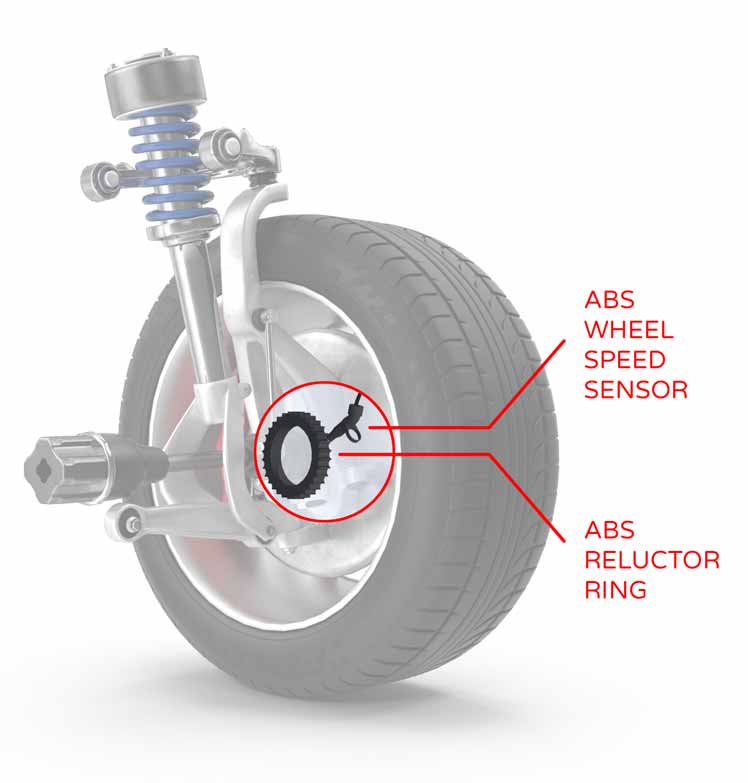
If you have a completely flat tire, it may not always be obvious with a simple visual inspection. Low-profile and run-flat tires can be difficult to detect when they have low or even no air visually. Keeping a tire pressure gauge in your glove box is necessary for diagnosing low or flat tires and maintaining the recommended tire pressure.
Once you have identified the problem tire, you should replace it with a spare tire or attempt to reinflate it with an inflation kit capable of sealing small punctures.
If you don’t have a spare or inflation kit with sealant, you should call roadside assistance or a tow truck. If you’re in a dangerous situation or location, consider driving on a flat tire very slowly for a short distance.
What To Do If You Have A Flat Tire While Parked
Tire pressure monitoring systems require you to be moving to read air pressures properly, so you will need to use a handheld tire pressure gauge to check the pressures of each tire.

A spare tire or inflation kit may get you temporarily mobile and allow you to drive to your local tire shop to have the tire patched or replaced. If you don’t have either of these, you can either have your car or truck towed to your local tire shop or have a friend drive you and the flat tire to the tire shop to repair or replace it.
Resources
Below are some links you may find helpful when learning about tires
Final Thoughts
Tire maintenance is important to help ensure you won’t end up with a flat tire or tire blowout in the first place. Your car or truck’s tire pressure monitoring system is designed only to alert you when your tire pressure is 25% below the recommended tire pressure.

It’s important to regularly check the air pressure in your tires manually, have your tires rotated every 5,000 miles, and keep an eye on the amount of tread wear.
Driving with a flat tire should be avoided unless absolutely necessary, but it can be done slowly for short distances.
Good luck and happy motoring.
